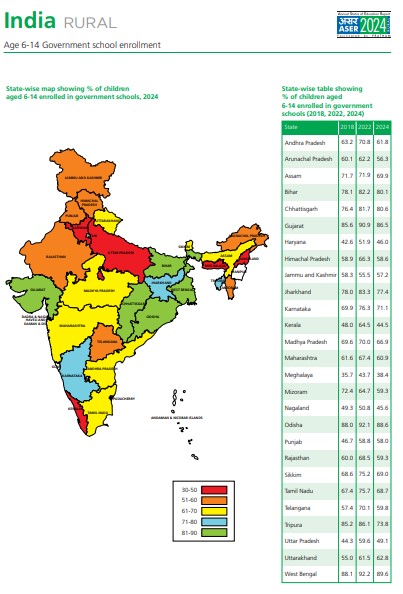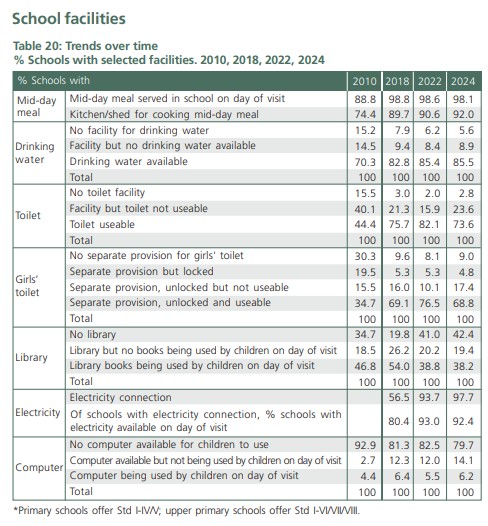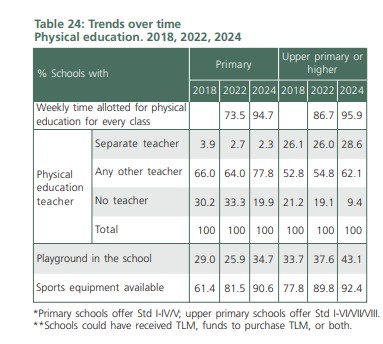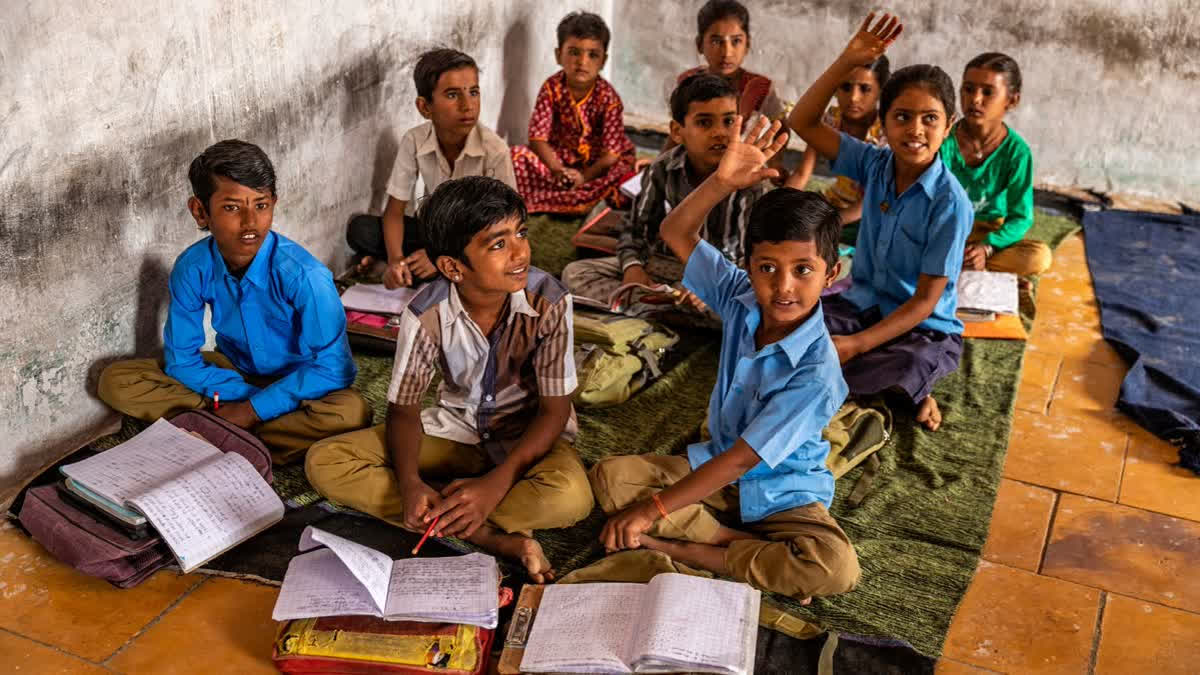Bhubaneswar: The Annual Status of Education Report (ASER Rural) 2024 released recently has brought to fore key indicators of education in schools across the country. The good news for Odisha is, the state has emerged as one of the top two states, the first being West Bengal, which has recorded a rise in student enrollment of children aged 6-14. So much so that the state has outperformed the national average.
According to the latest report, 88.6% of children aged 6-14 in Odisha study in government schools, a figure much higher than the national average of 66.8%. The state ranks second in the country, just behind West Bengal with 89.6%.
However, the national figures show a decline—from 72% in 2021 to 66.8% in 2024.

Gujarat (86.5%) and Chhattisgarh (80.6%) also recorded high enrollment figures next to Odisha (which reported a steady growth over the years) and West Bengal, the report cites.
Former Chief Minister and BJD supremo Naveen Patnaik expressed his happiness at the growth rate in the education sector, and took to his social media handle ‘X’ to attribute the state’s success to the ‘5T’ initiative. The initiative focused on transforming school infrastructure, introducing smart classrooms, e-libraries, quality laboratories, improved drinking water and sanitation, and enhancing sports and extracurricular activities.
Glad to share that #Odisha has excelled in Govt School Education in Rural Areas during 2024 as per the Annual Status of Education Report (ASER) 2024. The nationwide survey on children schooling and learning in rural India, facilitated by Pratham NGO has hailed Odisha for… pic.twitter.com/ic7sWW55pK
— Naveen Patnaik (@Naveen_Odisha) January 30, 2025
“Glad to share that #Odisha has excelled in Govt School Education in Rural Areas during 2024 as per the Annual Status of Education Report (ASER) 2024. The nationwide survey on children schooling and learning in rural India, facilitated by Pratham NGO has hailed Odisha for achieving second highest percentage of children aged 6-14 enrolled in Govt Schools (88.6%) and third in the country in Standard-III Reading. With sustained focus on #OdishaSchoolTransformation under #5T, Odisha achieved near universal enrollment among 3-year-old and more than 95% enrollment among 4-year-olds. #OdishaLeads,” Patnaik stated.
Educationist Jaleel Khan echoed similar sentiments, stating, that the interest in government schools has increased due to improvements in infrastructure and basic education parameters. "For example, smart classes, e-libraries, smart classes, etc. have been set up in government schools. Along with this, various schemes have been adopted to focus on growth of children. Now, the government has made a plan to bring back the children of government schools who had dropped out of school for half the time through the Shahid Madho Singh Haath Kharcha Scheme," he stated.

The Odisha Government launched the scheme in the current academic year 2024-25 with an aim to reduce dropout rate among ST students. Under the scheme a one-time incentive of Rs. 5000 will be provided to ST students getting enrolled in class IX & class XI.
Missing Playgrounds: A Growing Concern
However, when it comes to sports infrastructure, the ASER flagged a concern in case of Odisha. Despite 92.4% of primary schools having sports equipment, a staggering 56.9% lack a playground. Additionally, while 95.9% of schools have a sports timetable, only 28.6% have a dedicated physical education teacher.

The National Education Policy (NEP) 2020 emphasizes the importance of sports in enhancing intellectual, mental, and physical development, yet many schools in Odisha struggle with inadequate space for children to play.
“Sports facilities are as crucial as classrooms. They help students develop discipline, teamwork, and creativity,” said Khan. While Odisha schools have provided sports kits, many schools lack the infrastructure to utilise them effectively.
Pratham, an NGO, releases the Annual Status of Education Report (Rural) since 2005, on various parameters in the government schools, particularly performance highlighting the general trends over the years. The 2024 survey covered 6,49,491 children in 17,997 villages across 605 rural districts.
Read more



